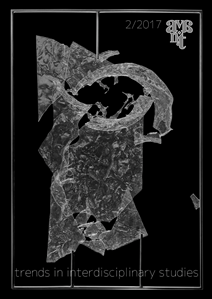Crypts, Phantoms, and Cultural Trauma: A Hauntological Approach to Recent British First World War Fiction
Crypts, Phantoms, and Cultural Trauma: A Hauntological Approach to Recent British First World War Fiction
Author(s): Anna Branach-KallasSubject(s): Studies of Literature
Published by: Ośrodek Badań Filozoficznych
Keywords: hauntology; British First World War fiction; cultural trauma; mourning; commemoration; family memory
Summary/Abstract: In my article, I analyse selected British novels about the First World War published at the turn of the 20th century, from the theoretical perspectives proposed by Maria Torok and Nicolas Abraham in The Shell and the Kernel: Renewals of Psychoanalysis. Pat Barker in Toby’s Room (2012) and Sue Gee in Earth and Heaven (2000) imagine their protagonists’ difficult evolution from melancholia to mourning after the loss of brothers and/or lovers, at the front. The concepts of incorporation and illness of mourning are used to explore the complicated process of bereavement in Barker’s novel, where hauntology becomes a form of honte-ology, from the French honte, shame. In Gee’s beautifully melancholic novel, the haunting trauma of loss is subtly evoked by images of empty fields, neglected farms, urban vistas filled with spectral figures of unemployed veterans. Moreover, Earth and Heaven affects the reader so deeply because the understated pain of loss becomes movingly tangible after the accidental death of the central protagonist’s six-year-old son, which seems to “condense” the pain of war bereavements a decade after the conflict. My intention is also to demonstrate that Sebastian Faulks in Birdsong (1993), Esther Freud in Summer at Gaglow (1997) and Pat Barker in Another World (1998) approach the Great War as a phantom haunting their contemporary protagonists. The persistence of the unknown past has a profound impact on these characters and only by trying to relate to the Great War do they find answers to their existential dilemmas. This directs our attention to the incomplete processes of First World War mourning, the persistence of endless grief and the potential continuity of unresolved trauma(s) in transgenerational memory. The five novels under consideration also problematise the issue of silence—the unsayable family secret and/or the collective disregard for the national past. The psychoanalytic concept of crypt illuminates the relation between present and past in these fictions and makes it possible to draw a connection with the sociological concept of cultural trauma, referring to certain foundational events constructed as traumatic from the point of view of the British collectivity.
Journal: AVANT. Pismo Awangardy Filozoficzno-Naukowej
- Issue Year: 2017
- Issue No: 2
- Page Range: 89-100
- Page Count: 12
- Language: English

